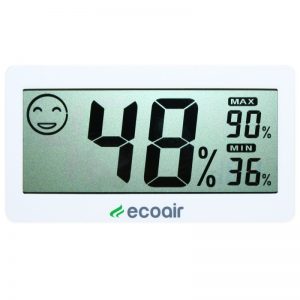
Ecoair reveals how managing excess moisture can help us stay healthy during the UK’s worst outbreak of flu in decades.
The Flu epidemic is a very real threat in the UK. Public Health England’s latest report records a total of 2,045 flu-related hospital admissions and 214 confirmed deaths from flu so far this winter. Sally Fok, Co-founder and MD of Ecoair and Air Treatment Expert, comments.
Viruses thrive in humid conditions
“Airborne microorganisms such as viruses thrive in humid conditions. As soon as humidity levels rise above 60%, viruses survive longer and breed quicker, escalating the risk of contagion.
“High humidity is not uncommon in UK homes during the cold, wet winter months. With a tendency to turn up the heating and close doors and windows to keep a house as warm as possible, we significantly reduce air circulation, causing moisture generated inside to become trapped. This creates exactly the warm, damp conditions that microbes need to thrive.”

Monitoring for excess moisture
“Humidity can be measured by using a hygrometer. These are widely available online, inexpensive, and will provide peace of mind. Any reading above 60% and it is strongly advisable to take steps to reduce the moisture levels in your home to protect your health.
“You can’t see humidity; visible signs of moisture damage — damp, mould, mildew, condensation, rotting or warped wood or peeling paint — won’t appear until humidity levels are consistently around 70% or above. If these signs are present, air moisture levels are way above optimum levels and as well as risking your health, you’ll likely also end up with costly damage repair bills.
“It is important to test all living spaces; it may be that the excess moisture only occurs in specific rooms. Bathrooms, bedrooms and basements tend to be the worst culprits.”
Reducing excess moisture to protect against illness
“Closing windows and curtains, air drying or hanging laundry on the radiator, taking long baths or showers, blocking vents, draughts or gaps, boiling the kettle, cooking, even breathing, can all contribute to the build-up of excess moisture in our homes.
“A very simple method to disperse excess moisture in the air is to ventilate. Frequent and good air circulation — especially in winter — will allow excess moisture to escape and as such, is a vital step for warding off flu and other illnesses. Open windows regularly and use vent fans and cooker hoods every time you cook or take a shower or bath.
“For a more immediate and controlled solution, a dehumidifier will successfully restore and maintain the correct moisture levels by quickly extracting moisture from the air. Once humidity levels in the home are brought down to below 60%, airborne microorganisms will not only stop breeding, but will struggle to survive.
“Desiccant dehumidifiers are particularly effective in reducing the risk of infection from airborne illnesses as in addition to extracting moisture from the air, they instantly kill any microorganisms that pass through the unit due to the internal heat. A dehumidifier with desiccant technology therefore doubles up as an air purifier, killing any microorganisms that may be present in the air. It also performs better than its compressor cousins at lower temperatures so is the ideal solution for the winter months.”
“Flu and other winter bugs may be a staple of the season, but by taking simple steps you can drastically cut the likelihood of harbouring dangerous microbes in your home.”








